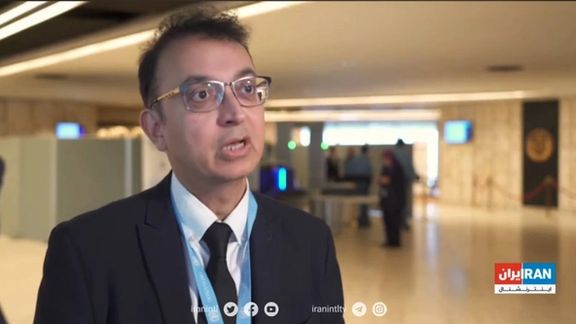Executions In Iran Reached Highest Level After Protests

Human rights monitoring groups concur that executions in Iran have reached unprecedented levels following the widespread protests of 2022, as indicated by figures compiled by these entities.

Human rights monitoring groups concur that executions in Iran have reached unprecedented levels following the widespread protests of 2022, as indicated by figures compiled by these entities.
At least 767 Iranians were executed in the year ending March 2024, according to the Human Rights Activists News Agency (HRANA). That is more than double the figure for the year ending March 2022, when 333 were executed. Some human rights reports have mentioned a slightly higher numbers.
Many human rights activists say the executions have very little to do with justice and are designed primarily to ‘set examples’ and instill fear in the wider society to make it easier to control. At least eight people were hanged over trumped-up charges related to the nationwide protests of 2022, with several more protesters currently on death row.
A recent Amnesty International report further underscored the severity of the situation, revealing that from January 1, 2012, to July 31, 2023, over five thousand individuals, including at least 57 children, were executed in Iran.
It is widely believed that most executions in Iran are drug-related. There’s little trust in official accounts, however, since there’s no transparency and no real due process. So activists say they fear that the regime may use criminal charges as cover for political cases, especially if the accused is from the ‘periphery’ and lacks support networks to follow and publicize their case.
The United Nations special rapporteur on human rights in Iran has stated that the number of executions of ethnic and religious minorities in Iran is disproportionately high.

According to human rights watchers Hengaw, in 2023, about 4 out 10 of all executions have been Baluch (183) or Kurd (151). Both ethnic groups are highly active politically, and both played parts in the most recent wave of protests (2022) that was far greater than their size in Iran’s population.
Iranian judiciary officials routinely deny any conflation of dissent with criminal activity. When questioned by Western journalists about executions or human rights abuses, Iranian officials consistently maintain the official stance that the judiciary operates independently and is not answerable to the presidential administration.
While the latter claim holds some truth, the former does not. In reality, Iran’s judiciary primarily serves as a tool to suppress dissent, a role it has fulfilled since the inception of the regime in 1979. Even constitutionally, the judiciary lacks true independence, as its head is appointed and dismissed by the Supreme Leader.
It's no surprise, then, that the judicial system tends to align closely with the desires and directives of Supreme Leader Ali Khamenei.
In July 2022, prior to the widespread protests in Iran (now better known as Women Life Freedome uprising), Khamenei made a dark reference to the notorious 1980s, when thousands of political prisoners were executed summarily, often after one or two questions, without even a sham trial.
"Our God today is the same God of the 1980s," he said.
The judiciary got the message. So did human rights organizations and activists, many of whom warned of more executions on the horizon. And they seem to have been right.
In the year and a half that followed, executions soared – from 333 in the year ending March 2022 to 617 in the year ending March 2023 and to 767 in the past year.
This sharp rise brought the total executed in Iran in the last decade to around five thousand people, according to Amnesty International, among them at least 57 children.
In his November 2023 report to the United Nations General Assembly, UN secretary general Antonio Guterres warned of an “alarming” growth in the number of executions in Iran. Many inside and outside Iran echoed this sentiment, urging the Iranian regime to stop the “state killings”, with numerous protests organized worldwide.
Last month, Khamenei dismissed the international outcry, calling it “ some noise”, and labeling those executed as "criminals." He also made the most of the Palestinians’ plight. "Westerners who make a fuss over the execution of a criminal have closed their eyes to the massacre of 30,000 people in Gaza," he said.
That’s probably not far off the total number of executions in Iran under Khamenei’s rule – since 1989.